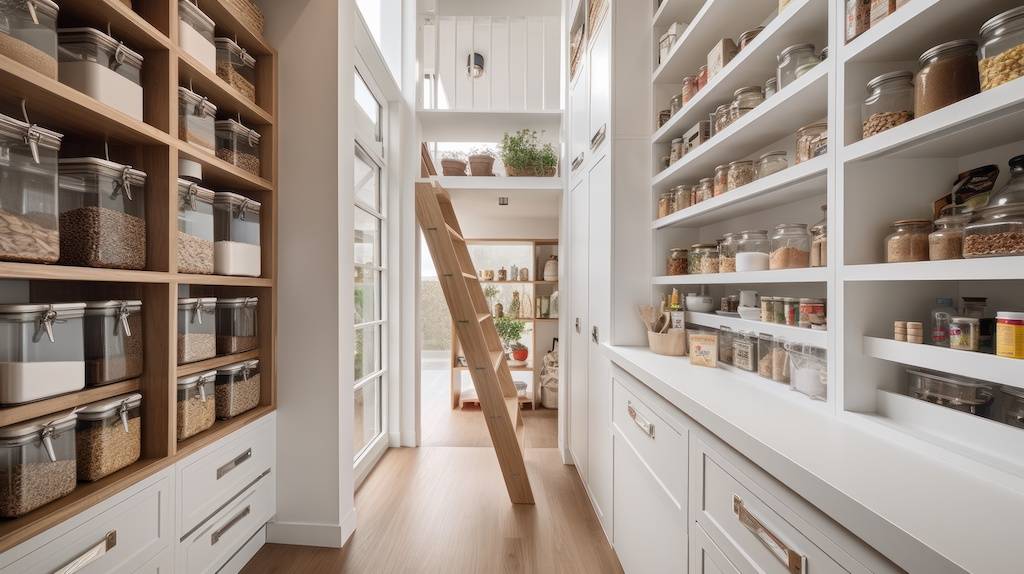Clutter stemming from insufficient home organization causes daily frustration and lost time hunting for essentials. But you can reclaim order and sanity for your belongings with smart storage solutions tailored to your needs.

Analyze Current Storage
The first thing to do is walk through your entire home room-by-room and take stock of contents to identify what requires storage. Note which areas seem disorganized. For example, are your kitchen cabinets overflowing, are there paperwork piles on desks, or closets bursting with clothes? These become priority zones for improvement. Discard or donate unused items to pare down your belongings to only what you actually need and use.
Examine closets closely to diagnose specific problems. Are they stuffed to the brim with no room to add anything? Can you not fit another hanger? Are garments stacked on shelves because hanging rod space is completely full? Are shoes and accessories strewn about with no homes? Is the lighting dim, making it hard to see? Defining these pain points guides targeted storage solutions.
Consider traffic flow and access as well. Closets in high-use areas like master bedrooms should maximize convenience with minimal obstacles to quickly grab items. Insufficient landing space when opening doors causes messy access and delayed finding clothes. Measure existing closet depths, widths, and heights to determine spatial constraints for planning.
Map Out Organized Layouts
For each problematic room and closet, map out an organized layout tailored to its unique contents and issues identified.
For closets, determine how much hanging rod space you need for shirts, dresses, coats and determine shelf lengths for folding jeans, sweaters, tees. Stagger double rods for two rows when needed. Dedicate custom shelving sized for shoes, accessories, purses, and linens. Use shelf risers, cubbies, and drawers to neatly corral smaller items. Position frequently accessed items at convenient mid-level heights as well.
Install upper storage cabinets over the hanging rod zone to utilize vertical real estate. Use drawer bases, pull-out baskets under lower shelves and rods and incorporate wall-mounted hooks for bags, belts, hats. Don’t forget that good lighting and mirrors make getting dressed easier as well.
With detailed plans complete, compile shopping lists of components like shelves, rods, cabinets, and accessories to execute the designs.
Prep Closets and Install Storage
Empty closets completely first. Remove existing shelving and rods. Patch holes, clean, then paint walls bright white to freshen up the space. Use your layout as a guide to precisely mark shelf and rod bracket locations on side walls and cabinets on back walls.
Cut shelves and mount standards securely into studs or drywall anchors on side walls. The people at SPAX recommend attaching shelves to standards using sturdy cabinet screws. Assemble cabinet boxes ensuring all edges are perfectly square. Mount cabinets into studs or drywall anchors. Add drawers, doors, hooks as needed.
Cut wooden closet rods longer than the opening width to allow mounting brackets at both ends. Attach rod brackets securely into studs or sturdy expanding drywall anchors. Reinstall items organized neatly into their optimized homes.
DIY creative touches like chalkboard painted drawer fronts, wallpapered back walls, and custom shelving make closets truly one-of-a-kind. Keep frequently used items handy and store rarely needed stuff up high or in closed cabinets. Maintaining organization is easier when everything has a designated spot.
Conclusion
DIY closet makeovers require assessing needs, planning layouts, proper installation, and a commitment to staying organized. But the resulting functional storage oases eliminate the daily morning scramble to get dressed. Investing the time and effort to customize homes for your belongings yields dividends for years through reduced stress and hassle. You gain back those valuable lost minutes searching for misplaced items.